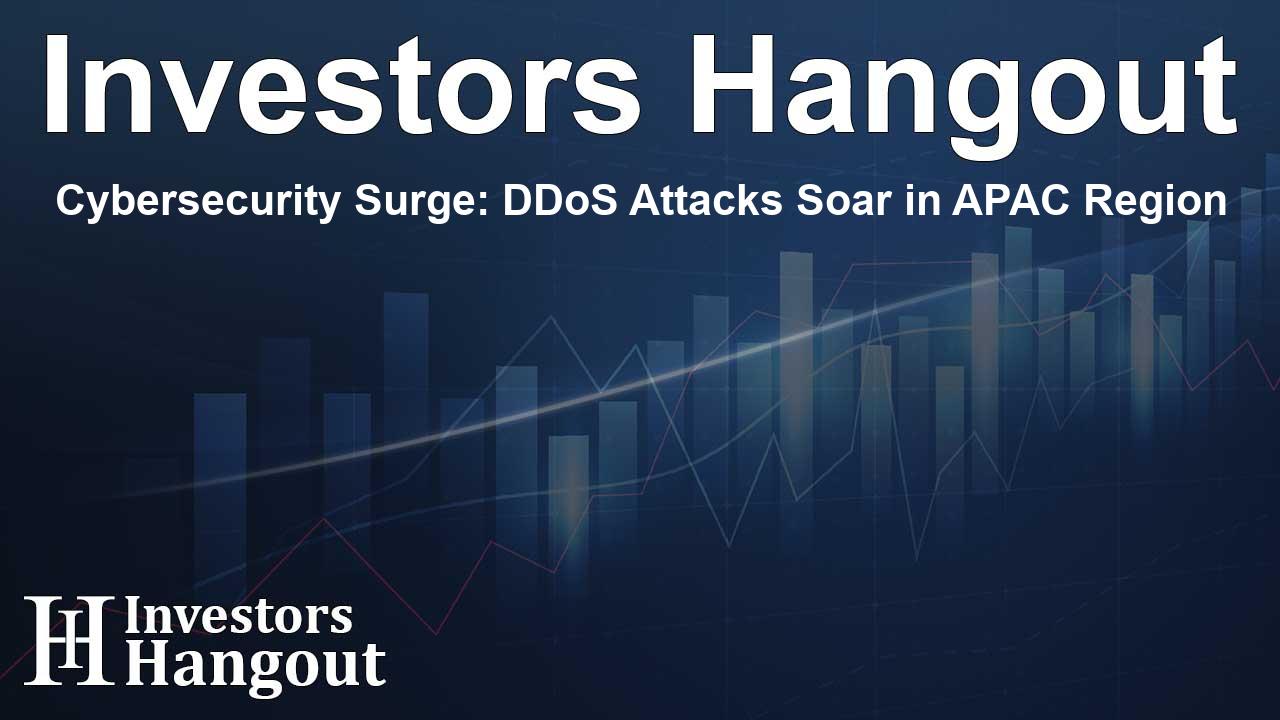Cybersecurity Surge: DDoS Attacks Soar in APAC Region

DDoS Attack Surge in the APAC Region
Tokyo witnessed alarming news concerning DDoS attacks. Recently, Radware (NASDAQ: RDWR), a recognized leader in application security and delivery solutions for multi-cloud environments, presented its annual findings which indicate significant rises in cyber activity throughout the APAC region.
Radware's comprehensive analysis, rooted in the track record of network and application attacks observed in 2024, reveals a noteworthy escalation in cyber threats. This data is gathered from the company’s own cloud infrastructure and managed services, alongside critical information collected from Telegram, a platform notorious for cybercriminal communication.
Yearly Increases in Cyber Attacks
This year, the statistics painted a concerning picture. Between 2023 and 2024, there was a staggering rise in DDoS attack volumes by 364%. Furthermore, DNS flood queries observed a 93% increase, marking government institutions and educational sectors as primary targets for hackers.
Kenichiro Sasaki, Radware’s country manager in Japan, articulated the increasing threat by stating, "A marked escalation in the frequency and intensity of cyberattacks can be seen across APAC. DDoS incidents are at the forefront of this upheaval. This change is fueled by geopolitical conflicts and evolving attack methodologies, which demands highly adaptive defense strategies to match the wave of sophisticated threats."
Growth in Network-layer DDoS Attacks
2024 has been pivotal in observing the growth trajectory of network-layer DDoS attacks which surged impressively. Radware's insights display the following highlights:
- Attack Activity: An increase of 72% in the average number of DDoS attacks per customer compared to last year.
- Attack Volume: The volume surged by 364% from the previous year.
- Industry Targets: Service providers were most affected, capturing 55% of the attack volume, followed by technology and gaming sectors.
Significant Rise in Application-layer Attacks
Application-layer DNS DDoS attacks marked a milestone last year. In APAC, the landscape showcased:
- Attack Activity: A phenomenal rise of 93% in DNS flood queries relative to 2023.
- Attack Volume: Malicious DNS requests increased by an equal margin of 93% with manufacturing and telecom sectors identified as the primary victims.
Escalation of Hacktivism
The political unrest around the globe has led to a spike in hacktivist activities, pushing it to the forefront of cyber threats. Data from Telegram indicates a 20% increase in DDoS attacks claimed by hacktivists from 2023 to 2024.
Specific targets within the APAC region included:
- Geographic Targets: India topped the list with 761 claimed attacks followed by Indonesia.
- Industry Focus: Government sectors accounted for over 17% of all hacktivist claims, illustrating a bold statement from these groups.
- Key Actors: Notable contributors include Executor DDoS, who claimed 513 attacks, reflecting an organized movement in cyber warfare.
Need for Enhanced Cybersecurity Measures
The ongoing surge of attacks emphasizes the necessity for fortifying cybersecurity frameworks. Organizations across sectors must adapt and evolve alongside these growing threats to safeguard their operations and maintain trust with their clients.
Individuals and enterprises must stay informed and updated on global threats. With solutions from Radware (NASDAQ: RDWR) leveraging AI-driven methods, it’s possible to enhance resilience against these sophisticated DDoS threats.
Frequently Asked Questions
1. What does the recent report from Radware reveal about DDoS attacks?
The report indicates a massive 364% rise in DDoS attack volumes in the APAC region between 2023 and 2024, highlighting urgent security challenges.
2. Which sectors have been most targeted by cybercriminals?
Government institutions, educational sectors, and service providers were notably targeted, indicating a focus on critical infrastructure.
3. How has hacktivism influenced DDoS attack trends?
Hacktivism has escalated with a 20% increase in claimed DDoS attacks from 2023 to 2024, driven by political and ideological disputes.
4. What role does AI play in mitigating these cyber threats?
AI technologies enhance adaptive responses to attacks, enabling organizations like Radware to offer robust defense solutions against sophisticated threats.
5. How can organizations protect themselves from DDoS attacks?
Organizations are encouraged to implement comprehensive cybersecurity strategies, utilize AI-driven solutions, and stay informed of emerging threats to fortify their defenses.
About The Author
Contact Dylan Bailey privately here. Or send an email with ATTN: Dylan Bailey as the subject to contact@investorshangout.com.
About Investors Hangout
Investors Hangout is a leading online stock forum for financial discussion and learning, offering a wide range of free tools and resources. It draws in traders of all levels, who exchange market knowledge, investigate trading tactics, and keep an eye on industry developments in real time. Featuring financial articles, stock message boards, quotes, charts, company profiles, and live news updates. Through cooperative learning and a wealth of informational resources, it helps users from novices creating their first portfolios to experts honing their techniques. Join Investors Hangout today: https://investorshangout.com/
The content of this article is based on factual, publicly available information and does not represent legal, financial, or investment advice. Investors Hangout does not offer financial advice, and the author is not a licensed financial advisor. Consult a qualified advisor before making any financial or investment decisions based on this article. This article should not be considered advice to purchase, sell, or hold any securities or other investments. If any of the material provided here is inaccurate, please contact us for corrections.
